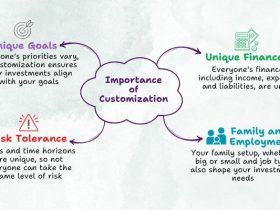In a processing facility in Tuas, workers dismantle laptops with practiced efficiency, separating circuit boards from plastic casings, extracting batteries, removing hard drives, and the question of how to ewaste recycle properly has become increasingly urgent as the volume of discarded electronics reaches levels that threaten to overwhelm existing disposal systems. Each device passing through this facility represents a small victory, materials diverted from landfills or informal recycling operations where environmental and health protections do not exist. Yet the tonnage processed here constitutes only a fraction of electronic waste generated across Singapore, with the remainder following less certain paths toward disposal that often prove neither smart nor safe.
The Scale of the Electronic Waste Problem
The numbers reveal a crisis accelerating faster than solutions emerge. Global electronic waste recycle generation exceeds 53 million tonnes annually, a figure growing by approximately 2 million tonnes each year. Singapore alone produces roughly 60,000 tonnes, translating to about 10 kilogrammes per person. These devices contain complex mixtures of valuable and hazardous materials: precious metals worth recovering, toxic substances requiring careful handling, and everything in between.
The environmental stakes prove substantial. Electronic devices contain lead in solder and older displays, mercury in fluorescent backlights, cadmium in batteries and semiconductors, and brominated flame retardants in plastic components. When electronics enter landfills, these substances leach into groundwater over decades. When burned in informal recycling operations, they release dioxins and persistent organic pollutants into air that people breathe. The damage accumulates slowly but persistently, creating health crises in communities where informal recycling concentrates.
Why Conventional Disposal Fails
Most people confronting an obsolete laptop or broken smartphone face a frustrating information gap. Standard rubbish bins clearly do not work for electronics, yet proper disposal channels remain unclear. Some devices sit in storage indefinitely, accumulating in drawers and cupboards. Others end up in general waste despite good intentions, eventually reaching incineration plants designed for municipal waste rather than hazardous materials.
Even when consumers attempt responsible disposal, the path proves uncertain. Electronics dropped at collection points may or may not reach proper recycling facilities. Investigations have revealed that significant quantities of e-waste ostensibly collected for recycling actually get exported to developing nations where informal processing operations extract valuable components whilst dumping the remainder. These exports, sometimes disguised as working equipment or charitable donations, transfer environmental problems from wealthy nations to communities least able to manage them.
Elements of Proper E-Waste Systems
Effective ewaste recycle operations differ fundamentally from informal processing. Authorised facilities operate under regulatory frameworks requiring specific environmental and safety standards. The differences manifest at every stage of handling.
Proper systems incorporate several essential elements:
- Convenient collection networks providing accessible drop-off locations at community centres, retail outlets, and dedicated recycling facilities, removing barriers that lead to improper disposal
- Licensed transportation ensuring materials move from collection points to processing facilities without diversion to unauthorised channels
- Certified data destruction addressing security concerns that prevent many organisations from recycling computers and servers containing sensitive information
- Systematic dismantling by trained workers using appropriate safety equipment, with hazardous components like batteries and mercury-containing parts removed for specialised handling
- Advanced processing technologies including automated shredding and separation systems that sort materials by magnetic properties, electrical conductivity, and density
- Material recovery through hydrometallurgical processes that extract precious metals from circuit boards with recovery rates exceeding 95 per cent
- Responsible disposal of materials that cannot be economically recovered, following environmental regulations rather than informal dumping
Making Better Choices Accessible
Singapore has made progress establishing infrastructure for proper electronic waste disposal. The extended producer responsibility framework implemented in 2021 requires manufacturers and importers to ensure proper end-of-life management for products they introduce to the market. Collection points have multiplied across residential estates and commercial districts. Licensed recyclers operate facilities meeting environmental standards.
Yet participation rates remain imperfect. Many consumers still lack clear information about disposal options. Businesses upgrading IT equipment sometimes choose the cheapest disposal option without verifying where materials actually end up. The convenience gap between proper disposal and simply discarding items with general waste continues influencing behaviour in ways that undermine environmental goals.
The Resource Recovery Opportunity
Beyond pollution prevention, proper ewaste recycle systems recover valuable materials that otherwise require virgin extraction. Electronic devices contain metals in concentrations far exceeding natural ore deposits. Circuit boards yield more gold per tonne than gold mines. The copper content in computer wiring surpasses typical copper ore concentrations. Recovering these materials reduces mining’s environmental footprint whilst securing resources for continued manufacturing.
The energy savings prove equally significant. Producing aluminium from recycled sources requires 95 per cent less energy than primary production from bauxite. Copper recycling uses 85 per cent less energy than mining and refining virgin copper. When multiplied across millions of devices, these efficiencies translate to meaningful reductions in energy consumption and greenhouse gas emissions.
The challenge of electronic waste will intensify as device ownership expands globally and replacement cycles potentially shorten further. Smarter disposal means understanding that electronics require specialised handling, seeking out proper collection channels, and ensuring materials reach facilities where recovery occurs rather than simply disappearing into waste streams whose ultimate destination remains conveniently invisible.









